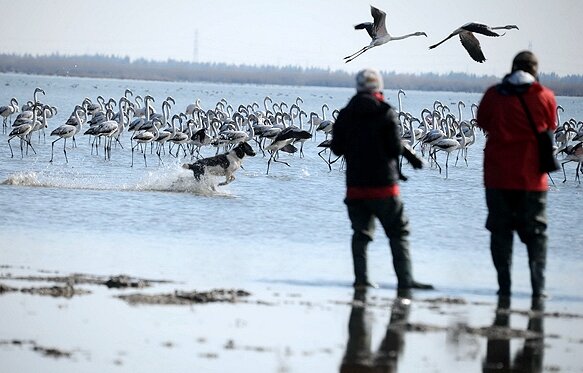INSUBCONTINENT EXCLUSIVE:
TEHRAN-- A workshop on bird-watching is set up to be held in the northern province of Mazandaran in the future, the deputy provincial
tourism chief has said.Participants will have the chance to view birds in the UNESCO-registered Hyrcanian Forests, boat in wetlands, learn
about 50 types of migratory birds, and practice conventional fishing techniques, Mehran Hassani stated on Tuesday.A major tourist attraction
in Mazandaran is bird watching, and efforts are being made to make this branch of tourism thrive in different areas throughout the province,
which welcomes a variety of migratory birds every year, the official added.This could gradually become an option to searching birds by
making money from their existence, he noted.Birdwatching, the observation of live birds in their natural environment, is a popular leisure
activity and scientific sport that developed nearly entirely in the 20th century.The northern provinces of Gilan, Golestan, and Mazandaran
welcome a range of freshwater lakes, wetlands, and lagoons, which are the main destinations for taking a trip pelicans, flamingos, ducks,
swans, coots, and some other species.The south Caspian Sea retreat will stay controlled by its northern visitors till about mid-May, when
the migration season pertains to an end
In a broader scene, the mid-winter population of migratory birds is approximated to exceed a million in the whole southern sandy shorelines
of the Caspian Sea that covers some 700km
Sandwiched in between the towering Alborz range of mountains and the Caspian Sea, Mazandaran has a rich yet turbulent history
An early civilization thrived at the start of the very first millennium BC in Mazandaran (Tabarestan)
Its insecure eastern and southeastern borders were crossed by Mongol intruders in the 13th and 14th centuries
Cossacks attacked the area in 1668 but were repulsed
It was delivered to the Russian Empire by a treaty in 1723, however the Russians were never secure in their profession
The area was brought back to Iran under the Qajar dynasty.The northern section of the area consists of lowland along with the Caspian and
upland along the northern slopes of the Alborz Mountains
Marshy backlands control the seaside plain, and extensive gravel fans fringe the mountains
The climate is permanently subtropical and damp, with very hot summers.ABU/ AM

